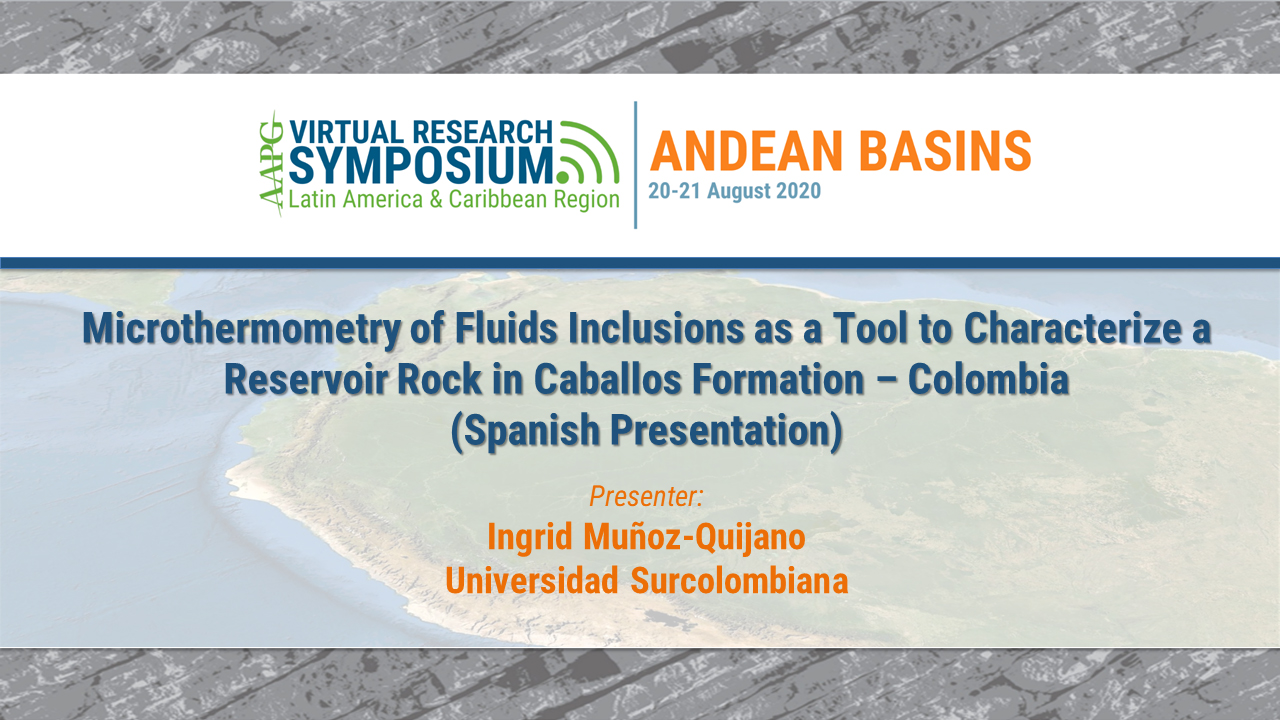
Summary
Authors: Ingrid Muñoz-Quijano (presenter), Ángela Caicedo, Camila Hoyos, Universidad Surcolombiana; Diego Loaiza, Universidad de Caldas
Presentation is in Spanish
The production of hydrocarbons in Colombia is going through a decrease due to the depletion of reserves, which can lead to the country losing energy sufficiency in less than ten years. However, detailed studies using tools like microthermometry of fluids inclusions applied in conventional reservoirs can be a way to find new recovery processes and exploration activities with the possibility of increasing the reserves levels. Caballos Formation is conformed by siliciclastic rocks with changes between subarkoses, litharenites to quartz arenites, and is classified as a reservoir rock of the petroleum system of the Upper Magdalena Valley Basin, and these rocks have characteristics for the accumulation of hydrocarbons. Microthermometry of fluid inclusions in this formation was used to recognize formation temperatures, some basic physicochemical variables, homogenization temperature (Th), density and salinity of the fluid in the entrapment or forward process, providing evidences on the evolution inside of sedimentary basin. Values of the temperature of homogenization and salinity were estimated using histograms of salinity frequencies, histograms of Th, and graphs of salinity vs. Th , evidencing that the fluid inclusions found in the different samples analyzed have salinities that vary from 19.13% to 33.25% eq. weight NaCl; similar densities in the intervals of 1.08 to 1.15g/cc and homogenization temperatures between 99.50°C and 187.20°C were found. The homogenization temperature obtained in the fluid inclusions indicate that the rocks of Caballos formation were subjected inside in the hydrocarbons generation windows of medium-low, which with later diagenetic process reached the current characteristics as evidenced in many of the oil fields present in the Upper Magdalena Valley area.
Bio:
Ingrid Muñoz-Quijano, Universidad Surcolombiana
Ingrid earned a PhD from Heidelberg University, Germany. During her 15 years of experience, she has worked at Heidelberg University and Salamanca University.
Currently, she is sedimentology and structural geology Professor at the Universidad Surcolombiana, Faculty of Engineering.
Her professional affiliations include International Association of Sedimentologists (IAS); Asociación Colombiana de Geólogos y Geofísicos del Petróleo (ACGGP); Sociedad Colombiana de Geología (SCG).
Please log in to view or purchase the video presentation